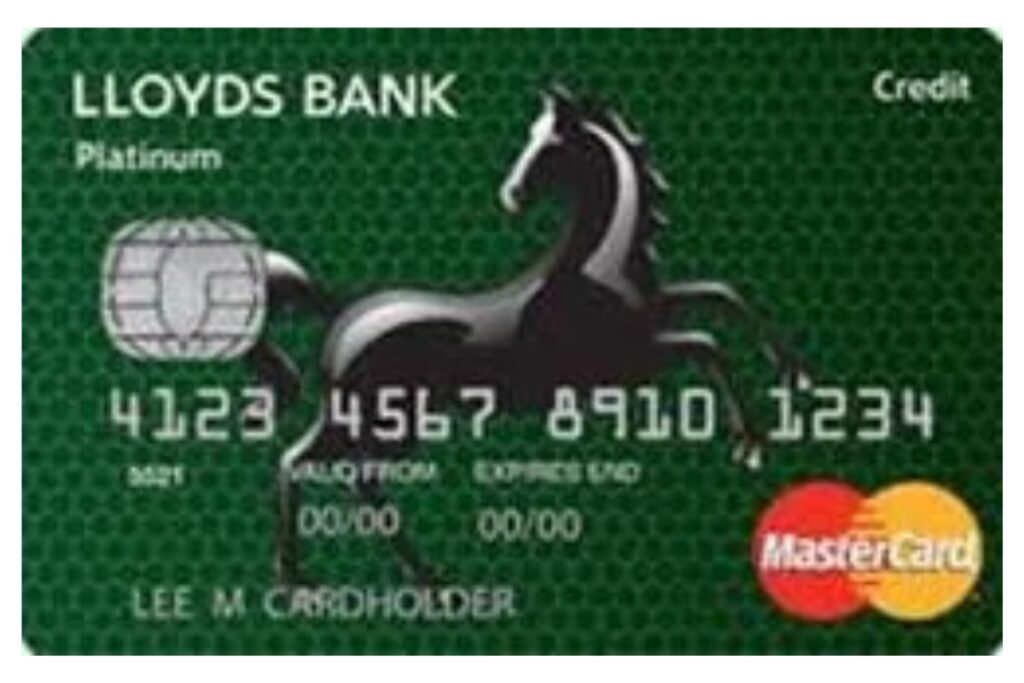Balance Transfer Credit Card to Lloyds Bank
Balance Transfer Credit Cards help consolidate balances into one account, offering intro deals, competitive rates, and easier financial management.

Balance Transfer Credit Cards are designed to help individuals streamline their debt by transferring balances from other credit or store cards to a single account. This process can simplify repayments and, in many cases, provide an introductory period with lower interest rates. These cards are particularly useful for those seeking to reduce the cost of borrowing by taking advantage of temporary promotional offers.
In addition to facilitating easier debt management, these cards provide a range of digital features. Customers can access online card management tools to monitor their transactions, make repayments, and even request additional transfers. The combination of accessibility and comprehensive fraud protection makes this card a practical option for those looking to regain control of their finances.
Benefits
Balance Transfer Credit Cards come with several notable benefits that can assist in the management of your finances:
- They enable you to consolidate multiple balances into one account, making tracking repayments easier.
- They typically offer an introductory period with reduced interest rates on transferred balances.
- Online card management tools provide 24/7 access to account details and transaction histories.
- Enhanced fraud protection ensures you are not charged for unauthorised transactions.
- Contactless payment facilities make everyday transactions faster and more secure.
- Paper-free statements help reduce clutter and promote environmentally friendly practices.
Prerequisites
Applicants for a Balance Transfer Credit Card must meet certain criteria to be eligible. You must be a UK resident aged 18 or over and have a regular annual income. The application process excludes individuals with County Court Judgements, Individual Voluntary Agreements, or bankruptcies recorded on their credit file. Additionally, those who are unemployed or full-time students are unlikely to qualify, and if you have been declined a Lloyds Bank credit card in the past 30 days, you will not be eligible to apply again immediately.
About the Lloyds Bank
Lloyds Bank is one of the longstanding financial institutions in the United Kingdom, with a history spanning over 250 years. Renowned for its commitment to providing secure and reliable banking services, the bank has evolved continuously to meet the changing needs of its customers. Its range of services includes current accounts, loans, mortgages, and various types of credit cards, including the Balance Transfer Credit Card. The bank’s emphasis on digital innovation has enabled customers to manage their accounts online efficiently, reflecting its dedication to customer-centric banking. With a robust network of branches and a 24/7 customer service centre, Lloyds Bank continues to uphold high standards in financial management and service delivery.
Who is this card for?
The Balance Transfer Credit Card is ideally suited for individuals who have accumulated balances on multiple credit or store cards and are seeking a more streamlined approach to managing their debt. It is designed for those who are looking to take advantage of introductory interest offers and who value features such as online account management, enhanced fraud protection, and contactless payments. If you have a steady income and meet the eligibility criteria, this card may offer you the opportunity to simplify your finances while potentially reducing the cost of carrying a balance.
What rewards and programs does the card offer?
Unlike some credit cards that focus on accumulating rewards such as cashback or travel miles, the primary benefit of a Balance Transfer Credit Card is its ability to consolidate debt under a single account. This card is less about accumulating rewards and more about offering financial flexibility and control. While it may not provide a traditional rewards programme, it does offer a range of features that support financial management:
- An introductory period with reduced interest rates on transferred balances.
- Advanced digital management tools that keep you informed about your spending.
- Enhanced security measures to protect against fraudulent transactions.
- Contactless payment options to facilitate quick and secure transactions.
Initial credit limit
The initial credit limit for a Balance Transfer Credit Card is determined based on your financial profile, including income and credit history. It is important to note that the balance transfer process is subject to a minimum transfer amount of £100, and the total amount you can transfer is bound by your approved credit limit. Key aspects include:
- Minimum credit limit: Typically, the minimum transfer amount is £100.
- Maximum credit limit: The upper limit is variable and depends on the individual’s creditworthiness and income, ensuring that the card remains within a manageable level of exposure.
The initial credit limit is not only reflective of your current financial status but can also be influenced by additional factors such as any other transactions and transfer fees that may apply. This flexibility ensures that you have a clear understanding of your available credit when consolidating your balances.
Step by step to apply for the card
Applying for a Balance Transfer Credit Card with Lloyds Bank involves a straightforward process designed to minimise complications. Follow these steps:
- Visit the official card page and check your eligibility using the One Check tool.
- Complete the online application form by providing the required personal and financial information.
- Submit any supporting documents that may be requested to verify your income and credit history.
- Await the bank’s decision, which is typically delivered within a short timeframe.
- If approved, review the terms and conditions carefully before accepting the offer.
- Activate your card once it arrives and begin the process of transferring your existing balances.
Card’s pros’ and cons’
The Balance Transfer Credit Card offers several advantages for those looking to manage multiple debts effectively. One of the primary benefits is the ability to transfer balances from various credit or store cards, potentially reducing the interest rate applied to your outstanding debt during the introductory period. This can be particularly advantageous if you are managing high-interest accounts, as the reduced rate may help lower your overall repayment costs. Additionally, the card’s online management system provides a clear view of your finances, making it easier to track repayments and manage transactions.
On the downside, it is important to be aware that transfer fees may apply, and these can add to your overall debt if not managed carefully. Furthermore, while the introductory interest rate may be low, once the period expires, the standard rate may be significantly higher, which could impact your repayment plan if the balance is not cleared. Some users may also find that the credit limit, which is determined by individual financial circumstances, does not offer as much flexibility as they require. Overall, while the card presents a useful tool for debt management, potential applicants should carefully consider the costs involved and ensure that the benefits outweigh any associated fees or restrictions.
How to unlock the card?
Unlocking your Balance Transfer Credit Card is a simple process that begins as soon as you receive it. Once your card arrives, you will need to activate it by following the instructions provided in the accompanying documentation. Typically, you can activate the card by calling a dedicated customer service hotline or through the bank’s online banking portal. During the activation process, you will be required to verify your identity and confirm your personal details. This step is crucial as it ensures that your card is secure and that you can immediately begin to manage your account online. Once the card is unlocked, you can access all the available features, including online transfers and fraud protection services.
Fees and tariffs
When considering a Balance Transfer Credit Card, it is essential to understand the various fees and charges that may apply. The costs associated with the card are designed to cover the administrative and operational expenses of managing transfers and maintaining account security. Key fees and tariffs include:
- Transfer fees: A fee may be applied each time you perform a balance transfer. This fee is typically a percentage of the amount being transferred.
- Interest rates: While an introductory interest rate is often available for balance transfers, standard purchase rates will apply after this period ends.
- Late payment fees: If repayments are not made on time, additional charges may be incurred.
- Annual fees: Some credit cards charge an annual fee; however, it is important to review the terms and conditions for specific details regarding this card.
Understanding these fees is crucial for effective financial planning, as they can impact the overall cost of managing your credit card balances. It is advisable to review all charges carefully before proceeding with a balance transfer.
Customer service
Lloyds Bank provides several channels for customer support to ensure that you can get help whenever you need it. Whether you have questions about your card, need assistance with an application, or require support with online banking, the bank’s dedicated service channels are available to assist you:
- Phone number: 0345 300 0000
- Website
- Email: Please use the contact form available on the website for email enquiries.
- Online chat: Accessible via the Lloyds Bank website for real-time assistance.




